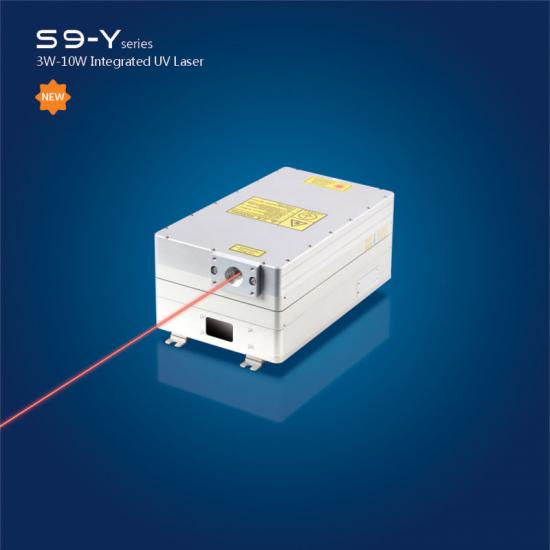Blog más reciente
Corte y taladrado de materiales PCB mediante láser UV RFH ®
Nov 22 , 2021Cutting and Drilling of PCB Materials Using UV RFH ® Laser
In recent years, ultraviolet (UV) wavelength lasers have been proving their worth in many industries when it comes to advanced precision micromachining applications. The driving
factor for the use of UV laser technology as a solution is its ability to cleanly and accurately ablate a wide range of materials at high speed in a cost-effective way.
Furthermore, the shorter wavelength allows tighter focusing, which is beneficial for processing small, high-precision features in a noncontact manner.
Lasers are routinely used in a variety of PCB manufacturing processes including via drilling, depaneling, profiling (cutting), laser direct imaging (LDI), repair, trimming, and
marking. Laser technology being a non-contact process completely eliminates mechanical stress on the material. Burr formation and micro-cracking in material are also avoided.
The tighter focus achievable with UV lasers can controllably remove small volumes of material, reducing deposits of ejected material on the circuits. Precision micromachining
achievable with Uv lasers allows more circuits to fit on a single panel, increasing the net usable area. Moreover, UV wavelengths are absorbed by a variety of materials in PCBs,
from copper to polyimide films, thus providing a onesolution-for-all-materials-and processes kind of flexibility. For example, the high beam intensity achievable with tighter
focus UV can remove copper, while lower beam intensity achieved by reducing laser power can cut dielectric material without damaging the bottom copper layer.
CUTTING AND DRILLING IN FLEX PCB MANUFACTURING
The trend in flexible PCB technology is towards miniaturization:thinner substrate materials and smaller hole sizes for both blind via holes and through vias, with concurrent
increases in feature density. These small dimensions cannot be achieved using mechanical methods or longer-wavelength lasers. UV wavelengths allow focusing the beam to a spot
size sufficiently small for drilling the required hole dimensions—on the order of ø100 µm down to a few tens of microns in diameter. Figure 2 show holes drilled in a Flex PCB
panel, comprised of a 25 µm-thick polyimide (PI) layer sandwiched between two 12 µm-thick copper (Cu) layers, using Spectra-Physics RFH ® 355-15 laser. Both ø30-µm blind vias
and ø100-µm through-vias were drilled. Such vias can be drilled at very high speeds—limited not by the laser, but rather by the speed and accuracy of the galvanometer-based
scanner.
Besides drilling, laser cutting is also used in flex PCB manufacturing. Whether it be straight-line singulation or contoured profile cutting, high-speed cutting with
good quality is required. The RFH UV laser was also tested for this process, with an optimized parameter set yielding .
CUTTING RIGID FR4 PCB PANELS
Another important manufacturing process that can be addressed using UV lasers is cutting of thicker, rigid PCB panels composed of fiberglass-based polymer composites such as FR4. Cutting may be necessary for depaneling (singulation) of finished devices from the larger PCB panel or for making contoured profile cuts. Figure 4 shows a 0.445 mm thick piece of FR4 cut into a 10 mm square using a 15 W RFH laser.The laser’s relatively shorter-ns pulse width and variable pulse frequency allows for controlled heat input into the material. Also, with careful process optimization, the formation of carbon debris has been minimized. As with many applications, there is a tradeoff between throughput and quality. For best throughput, continuous rapid scanning cuts through the material are performed in few seconds, but with slightly higher carbonization. On the other hand, for best quality cuts, the process is slowed down by introducing cooling delaysbetween scans, which yields reduced throughput and much lower carbonization. The piece shown was cut at a net speed of 7.5 mm/sec.

láser ultravioleta | láser verde | Láseres ultravioleta | láser uv dpss | láser de nanosegundos | fuente de láser ultravioleta | Láseres de estado sólido
RFH es una nueva familia de láseres Q-switched de estado sólido bombeados por diodos verdes y UV que ofrecen una combinación sin precedentes de rendimiento, confiabilidad y costo. Basado en el diseño It's in the Box™ de Spectra-Physics, con el láser y el controlador combinados en un solo paquete compacto, el RFH 355-15 utiliza tecnología comprobada en el campo para producir >15 W y >300 μJ por pulso de UV con un amplio rango de frecuencia de repetición de 0 a 500 kHz, alta estabilidad de pulso a pulso y excelente calidad de modo TEM00 para decenas de miles de horas de funcionamiento. La RFH El láser está diseñado específicamente para aplicaciones de micromecanizado en un entorno de fabricación 24 horas al día, 7 días a la semana, donde el tiempo de actividad del sistema es crítico. Los láseres UV ns están demostrando su valía en muchas industrias cuando se trata de aplicaciones avanzadas de micromaquinado de precisión, especialmente en aplicaciones relacionadas con PCB de alta velocidad y alta calidad. RFH proporciona un costo-rendimiento disruptivo: el costo de propiedad UV más bajo en la industria sin comprometer las características, el rendimiento o la confiabilidad. El precio es ideal para las aplicaciones de procesamiento de materiales láser relacionadas con PCB altamente competitivas.